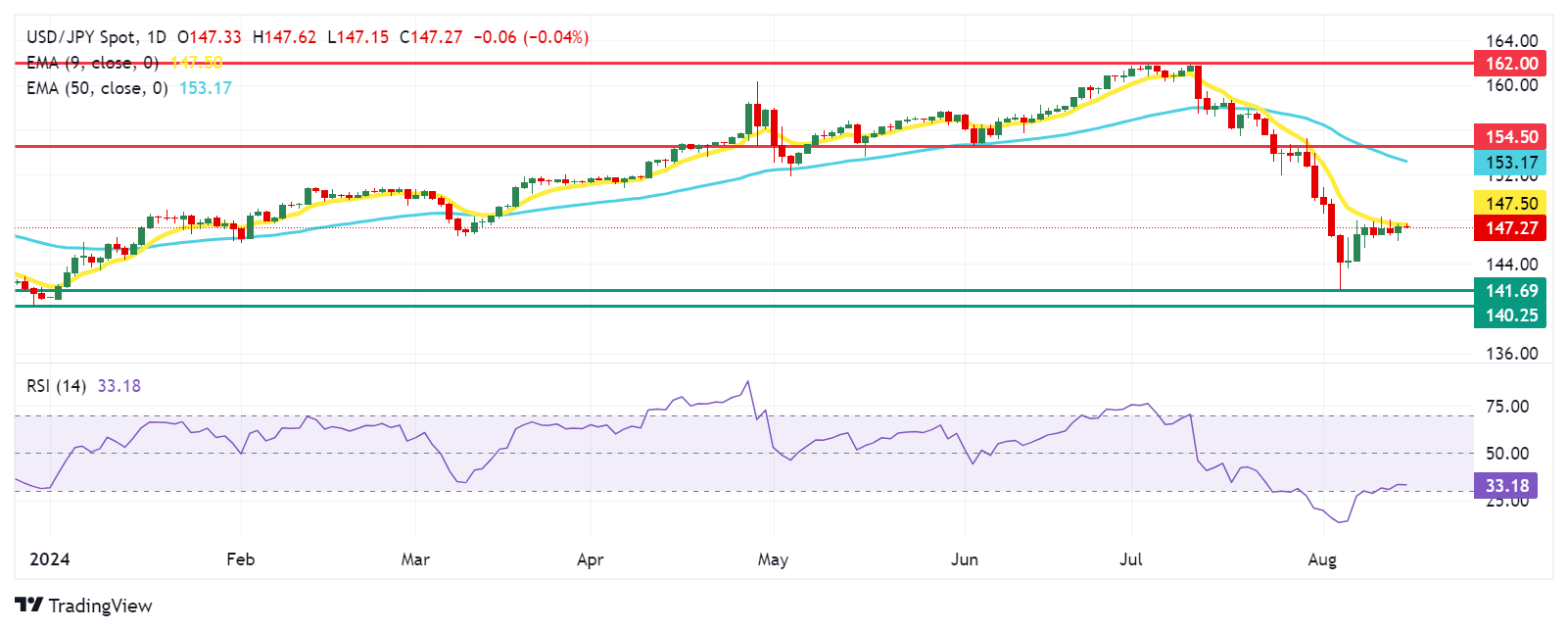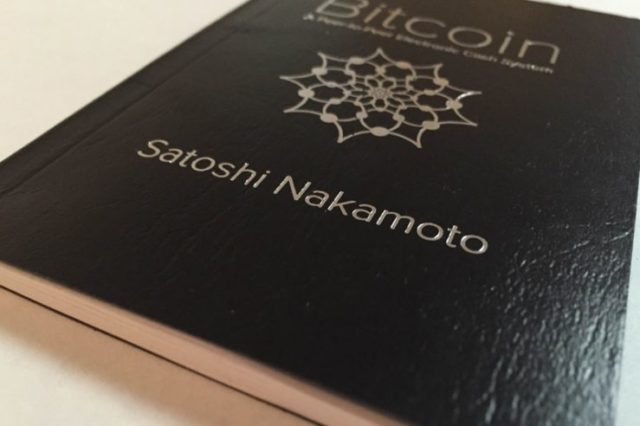- The Japanese yen rises on increasing odds of a hawkish BoJ stance amid upbeat GDP data.
- Japan’s gross domestic product rose 0.8% in the second quarter, marking the largest quarterly growth since the first quarter of 2023.
- The US dollar is appreciating due to improving Treasury yields despite rising expectations of a Fed rate cut in September.
The Japanese Yen (JPY) gained ground against the US Dollar (USD) on Thursday. This rise came as Japan’s Gross Domestic Product (GDP) growth for the second quarter beat expectations, supporting the argument for a possible near-term interest rate hike by the Bank of Japan (BoJ).
Japan’s Economic Minister Yoshitaka Shindo said the economy is expected to gradually recover as wages and incomes improve. Shindo also added that the government will work closely with the Bank of Japan to implement flexible macroeconomic policies.
However, the USD/JPY pair received support from the improved US Dollar amid higher Treasury yields. However, the potential for further gains in the Dollar could be limited by rising expectations of at least a 25 basis point rate cut by the US Federal Reserve (Fed) in September.
The subdued US Consumer Price Index (CPI) data has sparked debate over the magnitude of a possible Fed rate cut in September. Traders are favoring a more modest 25 basis point reduction, with a 60% probability, while a 50 basis point cut is still on the table. According to CME FedWatch, there is a 36% chance that the larger cut will happen in September.
Daily Market Wrap: Japanese Yen falls despite upbeat GDP data
- Japan’s gross domestic product (GDP) grew 0.8% quarter-on-quarter in the second quarter, beating market forecasts of 0.5% and rebounding from a 0.6% decline in the first quarter. This marked the largest quarterly growth since the first quarter of 2023. Meanwhile, annualized GDP growth hit 3.1%, beating the market consensus of 2.1% and reversing a 2.3% contraction in the first quarter. This was the largest annual expansion since the second quarter of 2023.
- Federal Reserve Bank of Chicago President Austan Goolsbee on Wednesday expressed growing concern about the labor market rather than inflation, pointing to recent improvements in price pressures along with weak employment data. Goolsbee added that the magnitude of rate cuts will be determined by prevailing economic conditions, according to Bloomberg.
- The headline U.S. Consumer Price Index (CPI) rose 2.9% year-over-year in July, slightly below the 3% increase in June and below market expectations. The core CPI, which excludes food and energy, rose 3.2% year-over-year, a slight decline from the 3.3% increase in June but in line with market expectations.
- Japanese Prime Minister Fumio Kishida announced at a press conference on Wednesday that he will not seek re-election as leader of the Liberal Democratic Party (LDP) in September. Kishida stressed the need to combat Japan’s deflation-prone economy by promoting wage growth and investment and achieving the goal of expanding Japan’s GDP to ¥600 trillion.
- Rabobank senior FX strategist Jane Foley notes that this week’s raft of US data releases, coupled with next week’s Jackson Hole event, should provide the market with a clearer view of the likely responses from US policymakers. However, her main expectation is that the Fed will cut rates by 25 basis points in September and will likely cut them again before the end of the year.
- On Tuesday, Atlanta Fed President Raphael Bostic said recent economic data has increased his confidence that the Fed can meet its 2% inflation target. However, Bostic indicated that additional evidence is required before he would support a rate cut, according to Reuters.
- Japan’s parliament is scheduled to hold a special session on August 23 to discuss the Bank of Japan’s (BoJ) decision to raise interest rates last month. BoJ Governor Kazuo Ueda is expected to attend the session, according to government sources cited by Reuters.
- The Bank of Japan’s Summary of Opinions from the July 30-31 Monetary Policy Meeting indicated that several members believe economic activity and prices are evolving as expected by the BoJ. They are targeting a neutral rate of “at least around 1%” as a medium-term target.
Technical Analysis: USD/JPY holds near 147.50 testing the 9-day EMA barrier
USD/JPY is trading around 147.40 on Thursday. The daily chart analysis shows that the pair is positioned slightly below the nine-day exponential moving average (EMA), suggesting a short-term bearish trend. Moreover, the 14-day relative strength index (RSI) is positioned slightly above the 30 level, suggesting a potential for correction.
In terms of support levels, the USD/JPY pair could navigate the region around a seven-month low of 141.69, touched on August 5. A further decline could see the pair approach a secondary support level at 140.25.
On the upside, the USD/JPY pair could find immediate resistance at the nine-day exponential moving average (EMA) around the 147.53 level, followed by the 50-day EMA at the 153.40 level, with the potential to test the resistance level at 154.50, where previous support has now turned into resistance.
USD/JPY: Daily Chart
Japanese Yen PRICE Today
The table below shows the Japanese Yen (JPY) exchange rate against major currencies today. The Japanese Yen was the strongest currency against the Swiss Franc.
| USD | EUR | GBP | JPY | CAD | AUD | NZD | CHF | |
|---|---|---|---|---|---|---|---|---|
| USD | 0.03% | -0.06% | -0.03% | -0.03% | -0.33% | 0.03% | -0.03% | |
| EUR | -0.03% | -0.10% | -0.08% | -0.05% | -0.44% | -0.17% | -0.06% | |
| GBP | 0.06% | 0.10% | 0.06% | 0.05% | -0.34% | -0.07% | 0.14% | |
| JPY | 0.03% | 0.08% | -0.06% | -0.00% | -0.33% | -0.09% | 0.09% | |
| CAD | 0.03% | 0.05% | -0.05% | 0.00% | -0.31% | -0.12% | 0.09% | |
| AUD | 0.33% | 0.44% | 0.34% | 0.33% | 0.31% | 0.26% | 0.46% | |
| NZD | -0.03% | 0.17% | 0.07% | 0.09% | 0.12% | -0.26% | 0.20% | |
| CHF | 0.03% | 0.06% | -0.14% | -0.09% | -0.09% | -0.46% | -0.20% |
The heatmap shows percentage changes of major currencies. The base currency is selected from the left column, while the quote currency is selected from the top row. For example, if you choose the Japanese Yen from the left column and move along the horizontal line to the US Dollar, the percentage change shown in the chart will represent the JPY (base)/USD (quote).
Bank of Japan FAQs
The Bank of Japan (BoJ) is the Japanese central bank, which sets the country’s monetary policy. Its mandate is to issue banknotes and carry out monetary and foreign exchange control to ensure price stability, which means an inflation target of around 2%.
The Bank of Japan has been pursuing ultra-loose monetary policy since 2013 in order to stimulate the economy and fuel inflation amid a low-inflation environment. The bank’s policy is based on Quantitative and Qualitative Easing (QQE), or printing money to buy assets such as government or corporate bonds to provide liquidity. In 2016, the bank doubled down on its strategy and further relaxed policy by first introducing negative interest rates and then directly controlling the yield on its 10-year government bonds.
The Bank of Japan’s massive stimulus has caused the Yen to depreciate against its major currency peers. This process has been exacerbated more recently by a growing policy divergence between the Bank of Japan and other major central banks, which have opted to sharply raise interest rates to combat decades-high inflation. The Bank of Japan’s policy of keeping rates low has led to a widening spread with other currencies, dragging down the value of the Yen.
The weak yen and the surge in global energy prices have caused Japanese inflation to rise, exceeding the Bank of Japan’s 2% target. However, the Bank of Japan judges that a sustainable and stable achievement of the 2% target is still not in sight, so a sharp change in current monetary policy seems unlikely.
Source: Fx Street
I am Joshua Winder, a senior-level journalist and editor at World Stock Market. I specialize in covering news related to the stock market and economic trends. With more than 8 years of experience in this field, I have become an expert in financial reporting.








